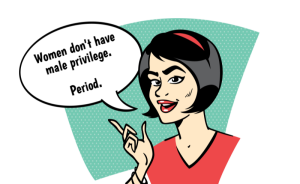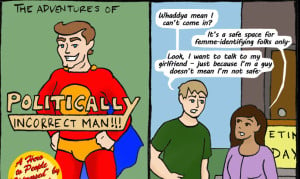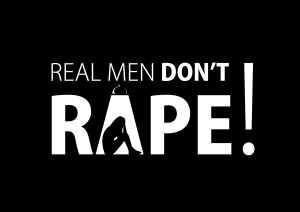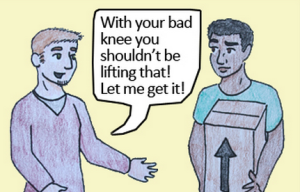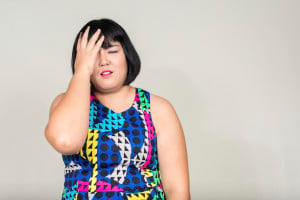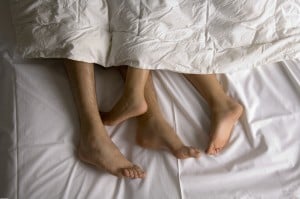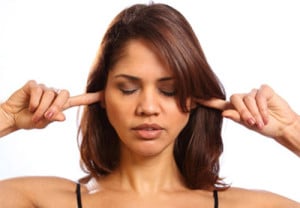
Source: Role/Reboot
Originally published on Role/Reboot and cross-posted here with their permission.
When enrollment suddenly and drastically dropped at my son’s preschool (long story), his class of ten kids shrank to four: him, and three girls.
He lived the next several weeks immersed in a super-deluxe fairy kingdom simulator. Nearly every day, when I picked him up and asked about his day, whatever story he had to tell (whether it involved someone falling from a slide, someone sharing candy contraband, or someone failing to play fair) began with, “We were playing princesses…”
One of his best days back then was the day he filled up his star chart at school and, when presented the Prize Box from which to choose his reward, chose the ever-coveted Hello Kitty compact mirror.
When he proffered his spoils for his dad’s and my admiration at the end of that day, we thought it was adorable. When he told my sister about it on the phone later that evening, she thought it was hilarious. Fellow parents in the park the following weekend (for at least a week, he carted his treasured, dot-eyed possession wherever he went) smiled politely.
Funny thing, though: Nobody called him a bad-ass.
Seems that illustrious title is reserved for (certain) little girls; whether they’re real-life girls eschewing frilly pink Halloween costumes or Lego girls created via a mash-up of “boy” and “girl” Lego parts, it seems that girls who bust through gender stereotypes by embracing activities typically considered the province of boys are the only ones worthy of bad-assity.
But why?
I mean, don’t get me wrong. I am all for rethinking, reforming, and in most cases, just plain smashing gender-based norms.
We’ve taught our son (somewhat erroneously, but in an effort to avoid blowing his little 5-year-old mind or turning him into The Kid Who Knows (and Shares) Too Much, we’re keeping it simple for now) that the only thing girls can do that boys can’t is grow babies in their bellies, and the only thing boys can do that girls can’t is pee standing up.
And it’s a constant uphill battle against what he learns at school.
Now, no matter what we say or do, he is convinced that the colors pink and purple, along with hearts, flowers, and long hair, are “for girls.” Don’t even get me started on watching that kid try to distribute valentines accordingly — but I digress.
The point is that I have a real problem with calling a girl a bad-ass for wearing a lumberjack (or heck, even a Jane Goodall) costume for Halloween or wanting to play football.
Really, all she’s doing is making a choice.
Would we consider her bad-ass for choosing a green toothbrush over an orange one at the dentist, or for auditioning to play a tree instead of a cloud in her school’s stage production of “Springtime: The Musical?” Probably not.
You might argue that it’s because we don’t associate green toothbrushes or trees with gender-based confinements — and that, therefore, those choices don’t break the mold in any demonstrable way. And I suppose you’d be right.
But if bucking gender norms is going to be the key criterion for bad-assitude, I wonder: Would a boy earn bad-ass points for choosing a Tinkerbell Halloween costume, or for getting a pedicure, as my son once did with me (at his request) before he stumbled face-first into the gender divide?
Again, my guess is no.
Yes, you might wholeheartedly support a boy’s desire to don a pair of fairy wings, or to have a flower painted on each toe (alas, my boy’s artistic vision was thwarted by the size of his toenails, so he had to settle for flowers on big toes and polka dots on the rest). Heck, you might even be proud of him for doin’ his own thing.
But “bad-ass” would probably not be the first adjective (or noun) to occur to you.
So I think we do real harm when we refer to girls as bad-asses for making certain decisions, because the subtly-whispered subtext is, “You’re not supposed to be doing that. Girls don’t do that.”
In our efforts to fight traditional gender norms, we’re essentially reinforcing them.
But we’re not just telling girls they’re overstepping their boundaries (and that doing so makes them a little rebellious); we’re also telling them that certain activities and aesthetics traditionally associated with girls — which some girls (and boys) genuinely enjoy — are inferior to those traditionally associated with boys.
I don’t have a little girl, but when I was pregnant (and had no idea which gender my unborn child would be), my husband and I vowed to push back against any fluffy pink princess tendencies that might rear their perfectly-coiffed heads if we had a daughter.
Who knows if we would have succeeded?
What I hope, though, is that our attempts to discourage her ignorant adherence to outmoded gender norms would not have resulted in our making her feel like pink, sparkly things are, in and of themselves, bad or indicative of weakness.
Because, come on. Sparkly stuff rocks. Babies know it, ‘80s hair bands know it, and sometimes girls do, too. Is that so wrong?
Finally, we seem to be saying that typical “boy” activities require a toughness that is somehow remarkable in a girl.
And aren’t those the messages we’re trying to combat?
Want to discuss this further? Login to our online forum and start a post! If you’re not already registered as a forum user, please register first here.
Chandra Blackwell is a marketing/communications writer and editor for University of Missouri-Kansas City as well as an occasional freelance writer, mother of a kindergartener, and wife of a redhead whom she married for his flawless ability to pull a pun out of thin air. She also makes up words, really loves cheese, and struggles daily with AP style (you can take the serial comma away from the girl, but you’ll never kill the love). You can read more at her woefully-neglected blog, instaprincess.net.
Search our 3000+ articles!
Read our articles about:
Our online racial justice training
Used by hundreds of universities, non-profits, and businesses.
Click to learn more
Most Read Articles
- « Previous
- 1
- …
- 30
- 31
- 32






